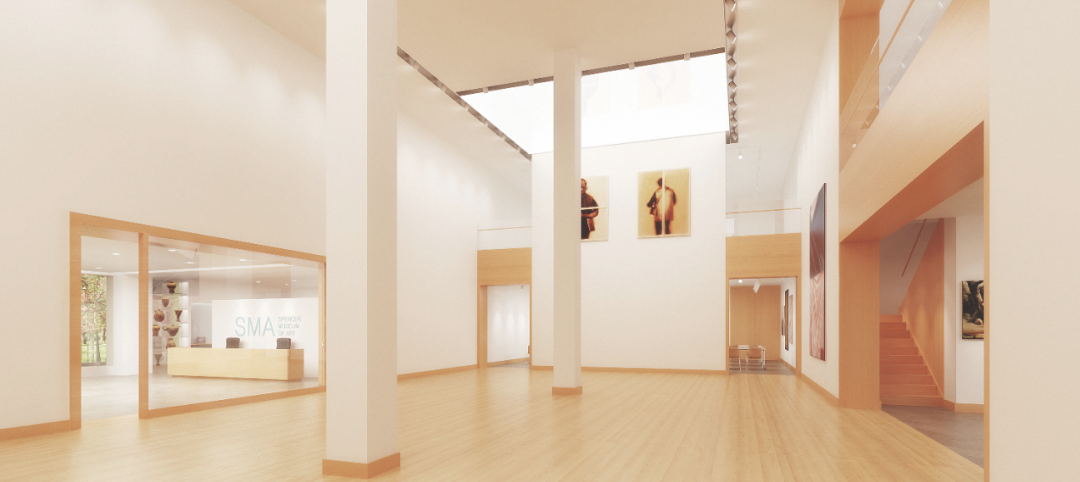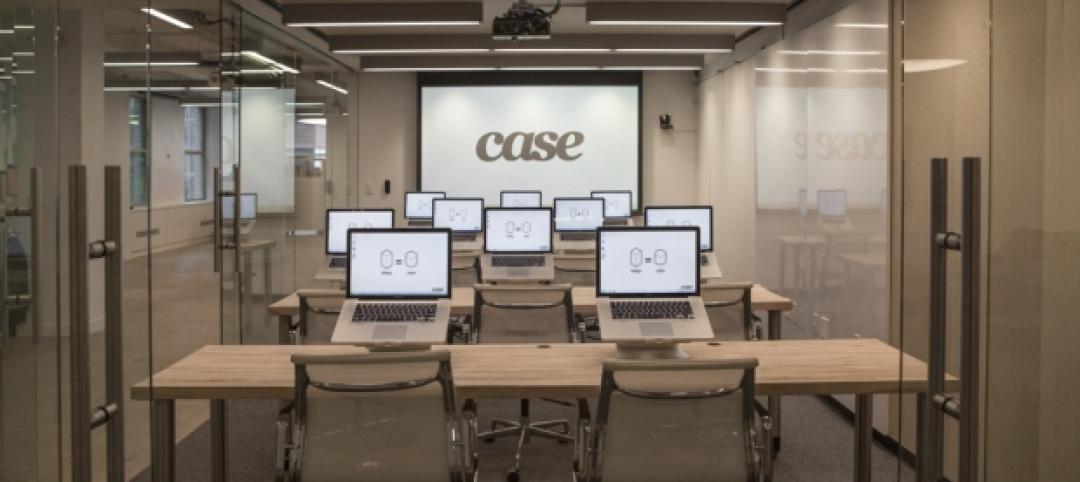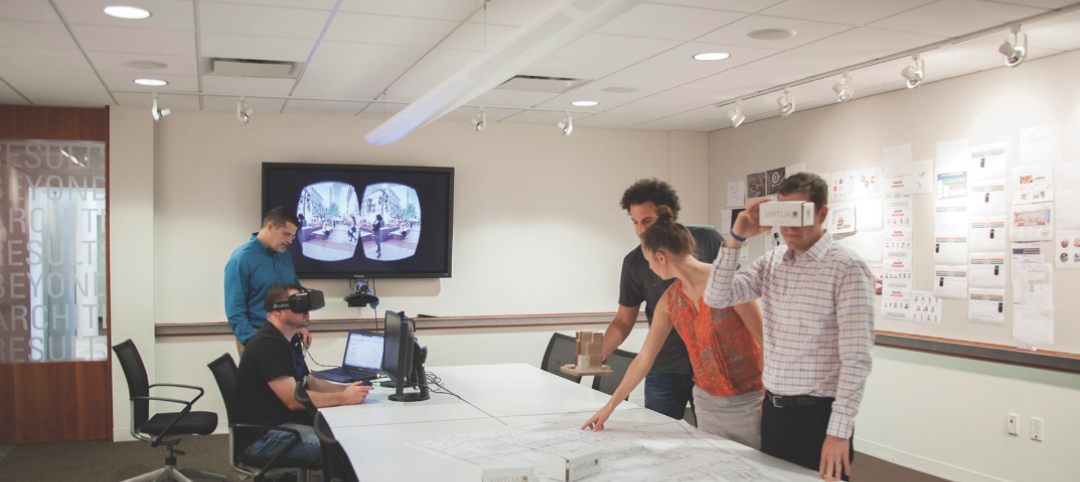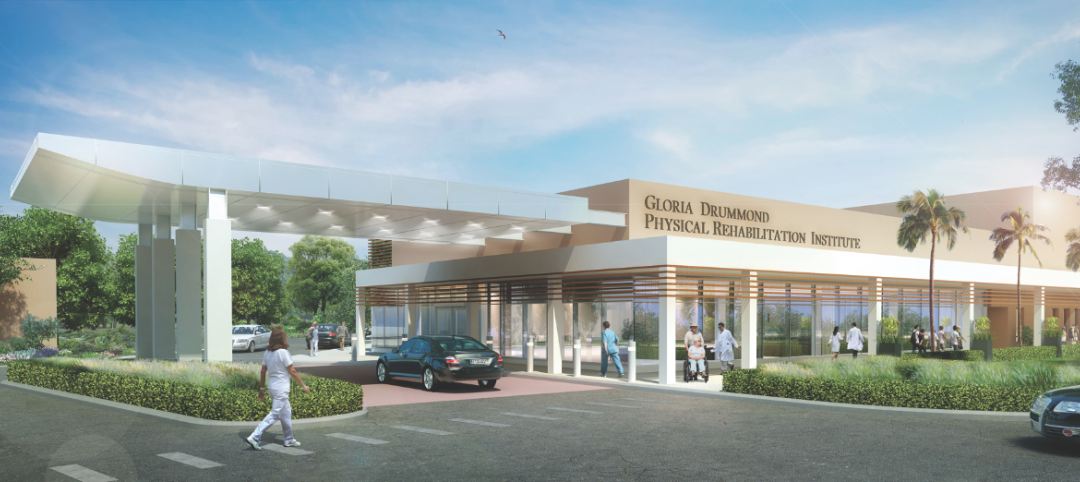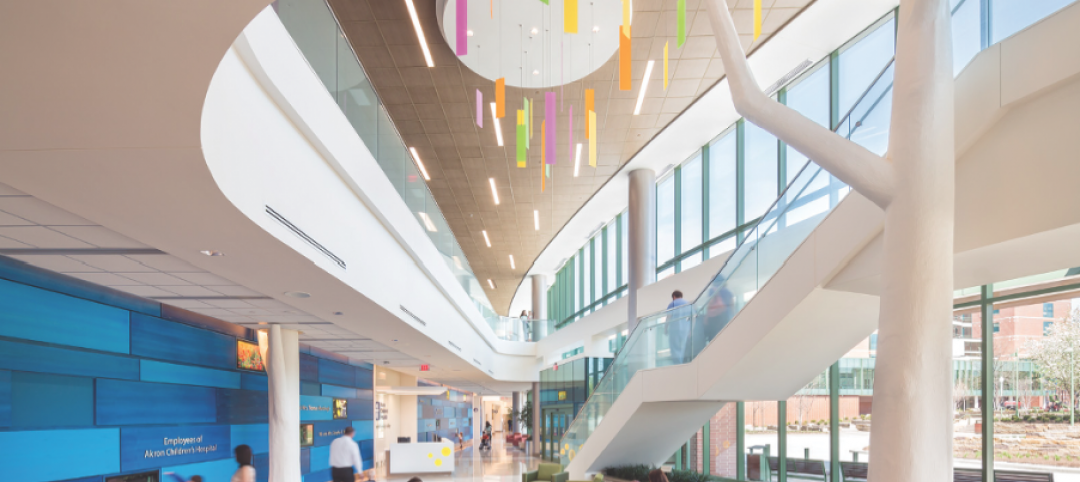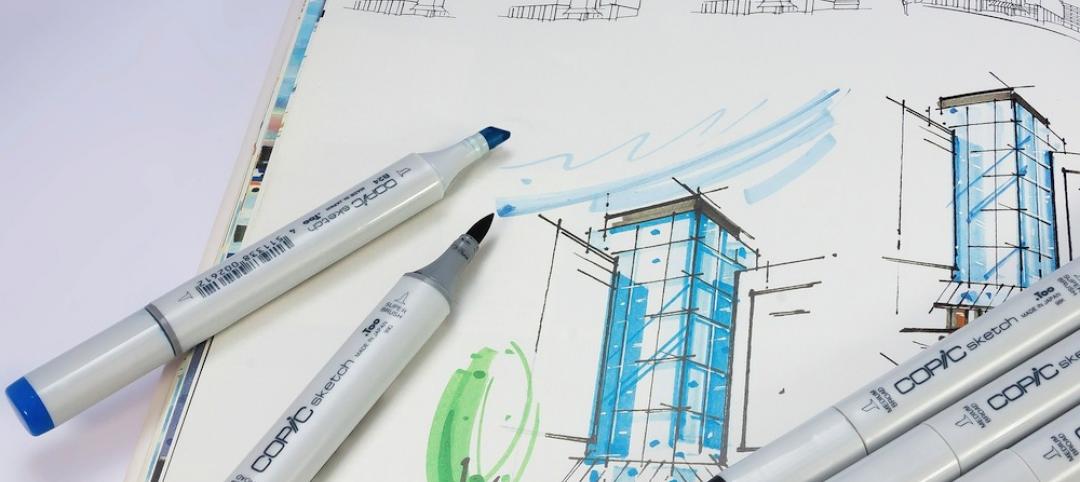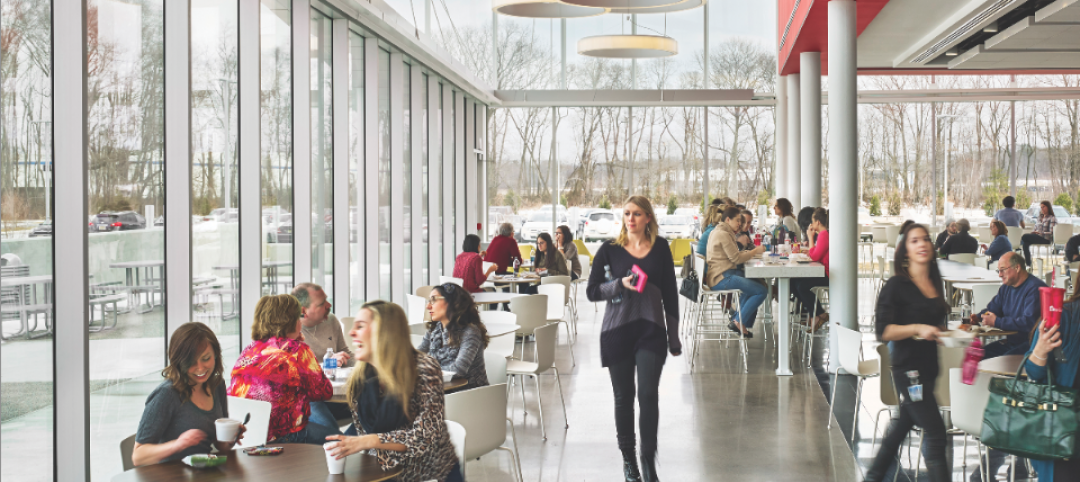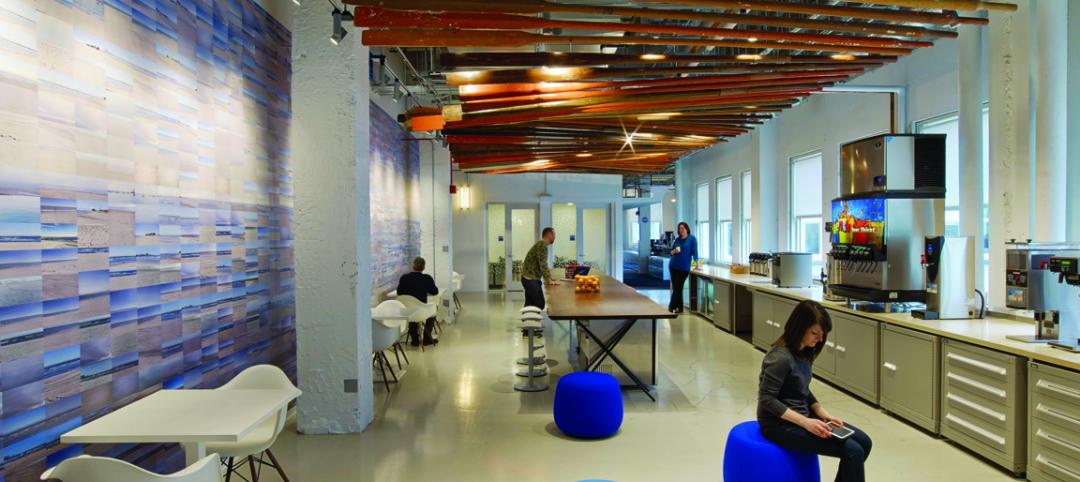This year marks Gensler’s 50th anniversary. As it looks toward the future, the planet’s largest architectural design firm sees a world “on the cusp of breakthroughs made possible by innovation, urbanization, and global connectivity,” write co-CEOs David Gensler and Andy Cohen, FAIA, IIDA; and Diane Hoskins, FAIA, in Gensler’s just-released Design Forecast 2015.
Some of the topics Gensler addresses in its 73-page forecast—such as the role of design in increasingly citified environments, where generational demarcations are not always clear and where technological advances proceed unabated—might sound familiar to anyone who’s been keeping up with current events within the nonresidential construction universe.
However, many other AEC firms are probably thinking about how they should respond to the same megatrends that Gensler identifies as shaping design:
• Workplaces are rethinking the nature of work itself as social media and business networks mesh.
• As more people move into cities, innovation will be the key to pragmatic and affordable approaches to planning.
• If technology is raising the stakes on just about everything, where does the human dimension come in?
• In tackling problems revolving around infrastructure resilience, societies are leaning toward holistic solutions, active management, and stewardship.
• As density becomes the abiding development strategy, developers and owners are attracting the best tenants with rich amenities and transit-served destinations.
• Good data and strong analytics are crucial for keeping up with generational cohorts that are “moving targets.”
Gensler’s Forecast also cites 27 trends that are directly impacting the firm’s three primary practices: Workplace, Community, and Lifestyle. Here’s a sampling:
Commercial office buildings “are less of a stand-alone real estate product and more a part of mixed use.” That use, more often than not, is a combination that goes beyond towers to provide “different scales, and … promote[s] the kind of informal interaction that generates higher retail traffic and evening and weekend activity.”
An organizational imperative for an energy sector that must stay flexible and adaptable in a volatile world “is to align: one brand, mission, purpose, and workforce.”
 Corporate campuses are shedding their stodgy image as disconnected, disparate buildings. By consolidating operations “under one roof,” companies maximize interactions, foster collaboration and innovation, and promote a sense of community. Photo: Hyundai Motor America, Fountain Valley, Calif. / courtesy Gensler
Corporate campuses are shedding their stodgy image as disconnected, disparate buildings. By consolidating operations “under one roof,” companies maximize interactions, foster collaboration and innovation, and promote a sense of community. Photo: Hyundai Motor America, Fountain Valley, Calif. / courtesy Gensler
Technology “disrupts, so tech companies are questioning how buildings work. That means rethinking their performance and exploring innovations like untethered power.”
A burgeoning media sector, despite its equipment-heavy context, is still a creative industry that favors workspaces that are “open, amenity-filled, flexible in relation to new technologies, and capable of being scaled up fast for growth.”
Mass customization will drive product design, as large cities serve as micro-markets for products and innovation hubs that influence broader consumer tastes.
Life sciences companies are replacing traditional labs with technically complex workplaces that support the latest scientific advances, and allow researchers to form interdisciplinary teams for collaboration.
Next-generation aircraft provides a growth opportunity for large, non-hub airports to offer direct international service, city to city, bypassing existing gateway hubs. Global mega-hubs will grow and evolve as leisure destinations with more space dedicated to retail and dining. “Primed by smart devices, the passenger experience will take cues from retail centers and hotels.”
Consolidation, demographic shifts, and new competition are causing “massive” changes in the healthcare sector. Consumers want more choices. Work-based wellness is entering into the healthcare space. And the rise in specialty care centers reflects the movement toward personalized medicine that integrates clinical innovations with tailored care delivery.
What’s differentiating retail centers in an age of online shopping is their engagement with customers and communities. “As retailers’ real and digital worlds converge, the browse/buy function is evolving.” And word of mouth, so important to sales, “is part of the smartphone data that give retailers the bigger picture.”
In a digital era, when an experience that can’t be shared in real time “didn’t happen,” the goal of entertainment projects needs to be to connect with audiences before, during and after the event “so people are engaged and the ROI is higher.”
The hospitality sector is working overtime to be informal and welcoming, by integrating local culture and letting the larger community in whenever they can.
Countries in the Middle East and Asia are competing for which can build the tallest building. But the success of these “vertical cities” will ultimately be measured “by how well they attract and support tenants, and how well they fit with and enliven the city at their feet.”
Gensler foresees tomorrow’s mixed-use towers as anchors for diverse, walkable and transit-served districts.
Read the Gensler’s Design Forecast 2015.
Related Stories
Giants 400 | Aug 7, 2015
UNIVERSITY SECTOR GIANTS: Collaboration, creativity, technology—hallmarks of today’s campus facilities
At a time when competition for the cream of the student/faculty crop is intensifying, colleges and universities must recognize that students and parents are coming to expect an education environment that foments collaboration, according to BD+C's 2015 Giants 300 report.
Giants 400 | Aug 7, 2015
RECONSTRUCTION AEC GIANTS: Restorations breathe new life into valuable older buildings
AEC Giants discuss opportunities and complications associated with renovation, restoration, and adaptive reuse construction work.
BIM and Information Technology | Aug 6, 2015
After refueling its capital tank, WeWork acquires BIM consultant Case
The merger is expected to help standardize how WeWork designs and builds out office space.
Giants 400 | Aug 6, 2015
BIM GIANTS: Robotic reality capture, gaming systems, virtual reality—AEC Giants continue tech frenzy
Given their size, AEC Giants possess the resources and scale to research and test the bevy of software and hardware solutions on the market. Some have created internal innovation labs and fabrication shops to tinker with emerging technologies and create custom software tools. Others have formed R&D teams to test tech tools on the job site.
Giants 400 | Aug 6, 2015
GIANTS 300 REPORT: Top 115 Healthcare Architecture Firms
HDR, Stantec, and Perkins+Will top Building Design+Construction's 2015 ranking of the largest healthcare architecture and architecture/engineering firms in the U.S.
Giants 400 | Aug 6, 2015
HEALTHCARE AEC GIANTS: Hospital and medical office construction facing a slow but steady recovery
Construction of hospitals and medical offices is expected to shake off its lethargy in 2015 and recover modestly over the next several years, according to BD+C's 2015 Giants 300 report.
Codes and Standards | Aug 6, 2015
ConsensusDocs releases new CM agency contract standard agreement
For use when owner acts as the construction manager, hires a construction manager, or uses multiple prime contractors
Giants 400 | Aug 5, 2015
GIANTS 300 REPORT: Top 135 Office Sector Architecture Firms
Gensler, HOK, and Perkins+Will top BD+C's ranking of the nation's largest office sector architecture and architecture/engineering firms.
Giants 400 | Aug 5, 2015
OFFICE SECTOR GIANTS: Today’s workplace design must appeal to Millennials’ ‘activity-based’ lifestyle
Office market AEC Giants discuss the latest trends workplace design, and the state of the office construction sector.
Giants 400 | Aug 5, 2015
GIANTS 300 REPORT: Top 37 Engineering/Architecture Firms
Jacobs, AECOM, and Thornton Tomasetti head Building Design+Construction's 2015 ranking of the largest engineering/architecture firms in the United States.




